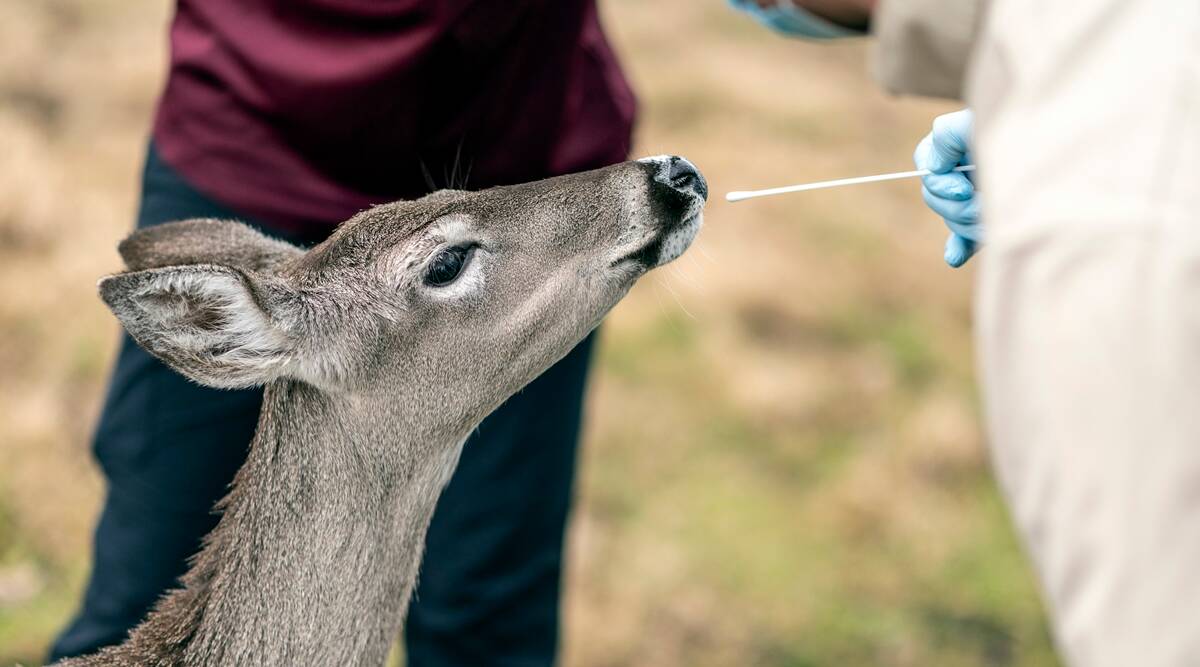Omicron Variant in White-Tailed Deer
According to a study, some white-tailed deer living in the US are infected with the SARS-CoV-2’s Omicron variant.
Overview:
- The study is yet-to-be peer-reviewed and has been posted recently on the bioRxiv preprint repository.
- This study also found SARS-CoV-2 neutralizing antibodies in one of the deer that is Omicron-infected. This suggests that similarly to humans, these animals can also be reinfected with the COVID-19 virus.
- The team, last year, found that up to 80 percent of white-tailed deer that were sampled across Iowa, US have tested positive for SARS-CoV-2.
- It was the first time the SARS-CoV-2 virus had been discovered in a free-living animal.
- The latest research shows that many urgent steps are needed to track the virus’s progress in deer and prevent human infection.
- This study might reveal whether it is possible for the virus to spread back to humans from deer.
What can happen if the virus circulates in these animals?
The longer the virus circulates in these animals and infects a larger number of individuals, the more likely it is to evolve and potentially lead to the emergence of a completely new variant resistant to the current vaccines.
How was the virus identified in the deer?
Blood samples from 131 deer were taken between December 2021 and January 2022 and 19 returned positive for SARS-CoV-2-specific antibodies. SARS-CoV-2 nucleic acid was also found in nasal swabs from seven of the 68 deer tested, indicating that these deer were infected with the virus. Whole-genome sequencing was done to identify that the virus variant was Omicron that was circulating among the white-tailed deer on Staten Island in New York. Phylogenetic analyses, which look at how organisms have evolved over certain time periods, revealed that the Omicron sequences found in deer were related to those found in infected humans in New York City and elsewhere, implying that the virus spread from humans to deer.
Month: Current Affairs - March, 2022
Category: International / World Current Affairs • Science & Technology Current Affairs


